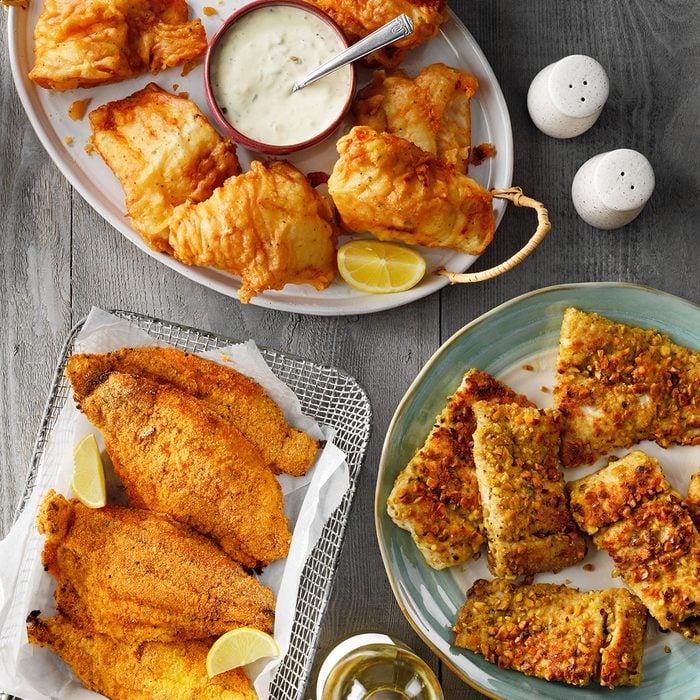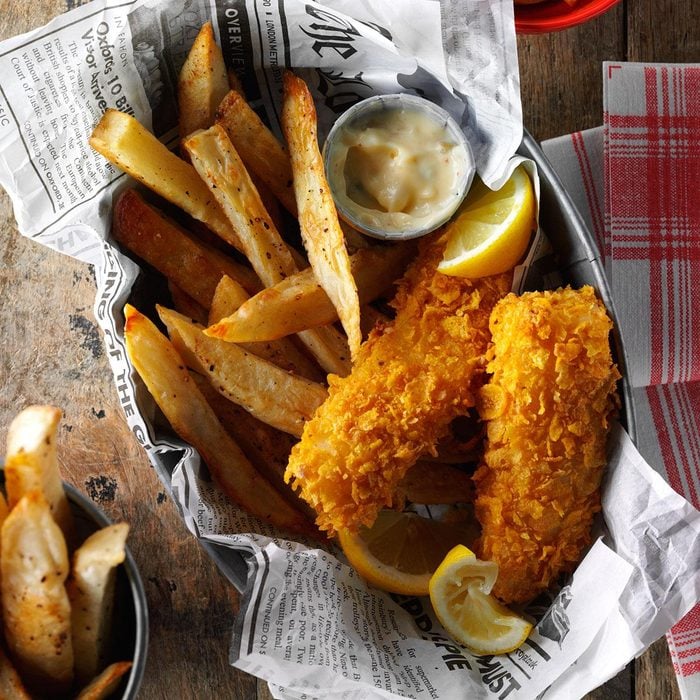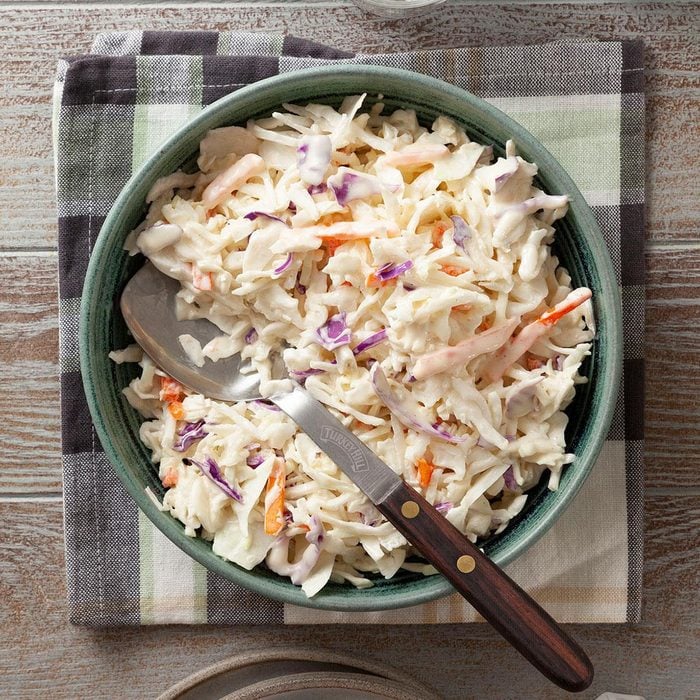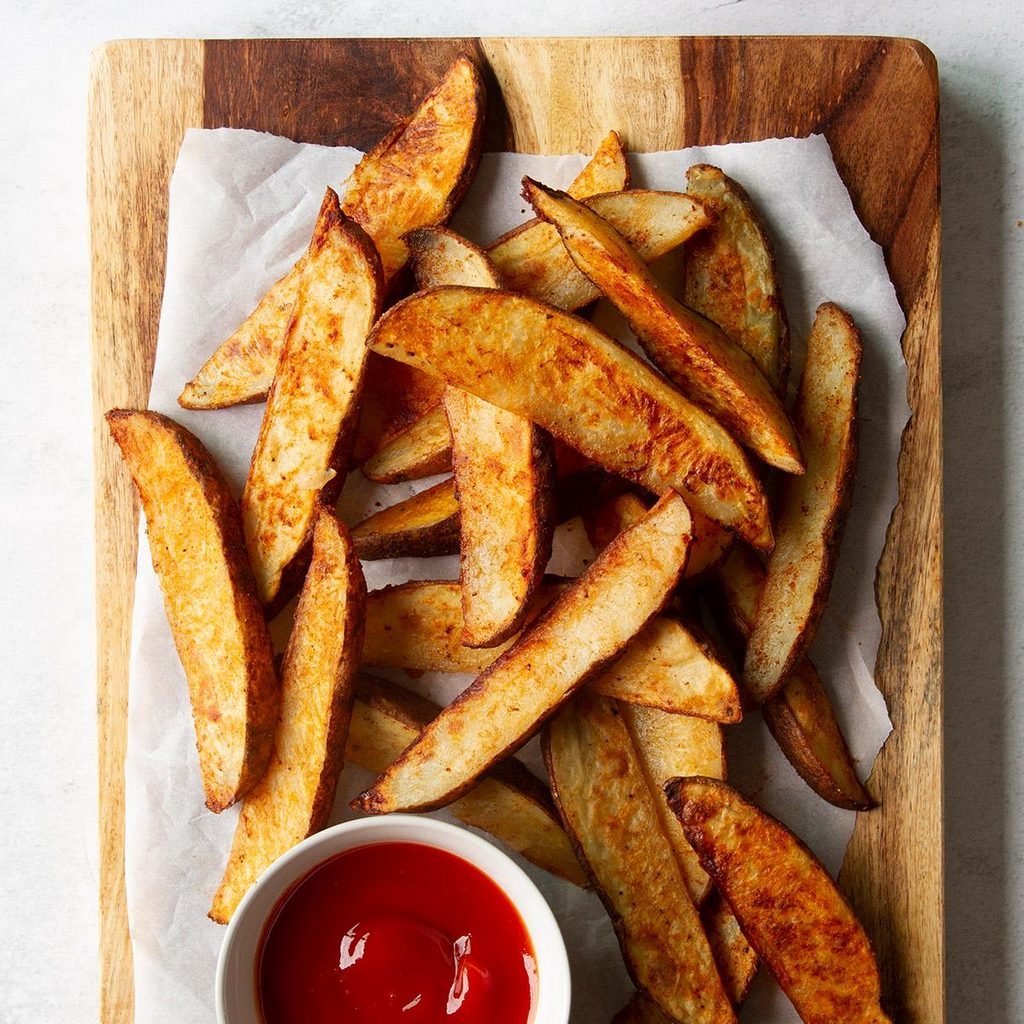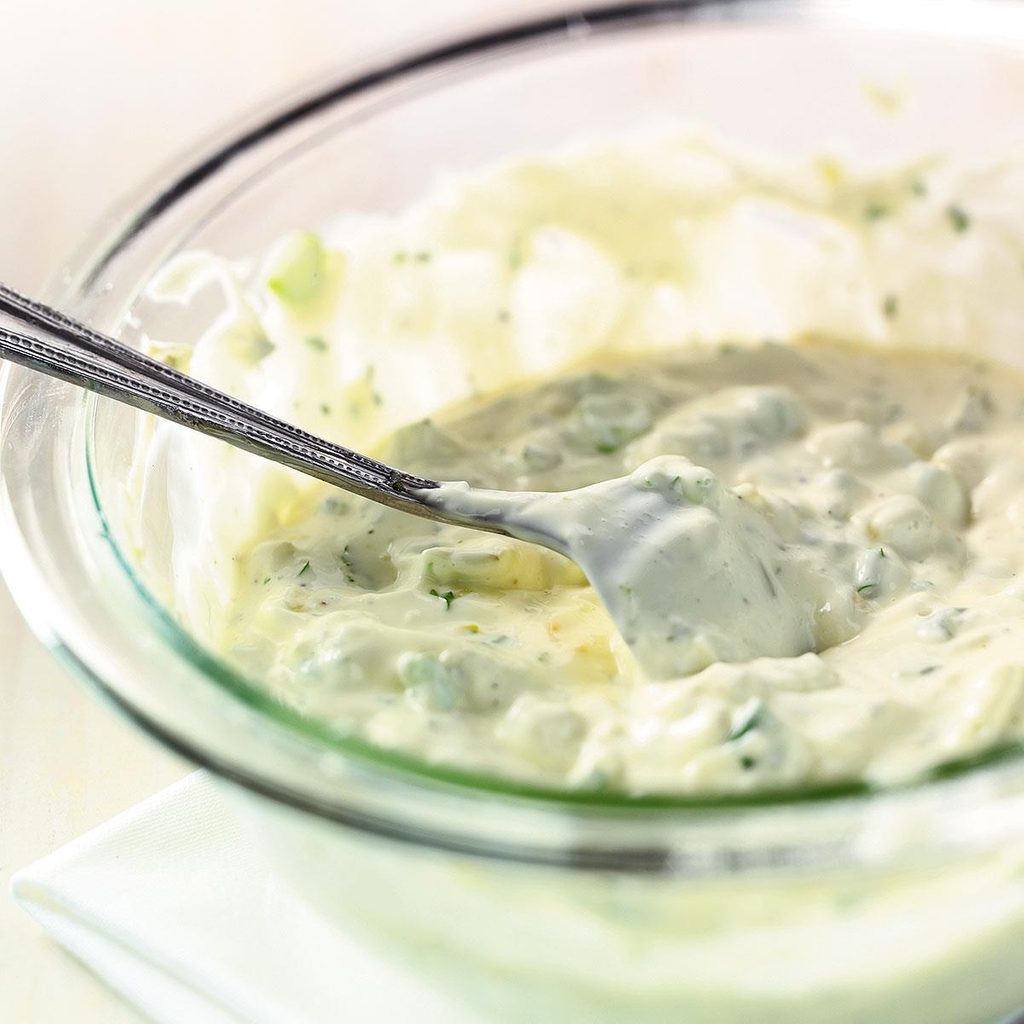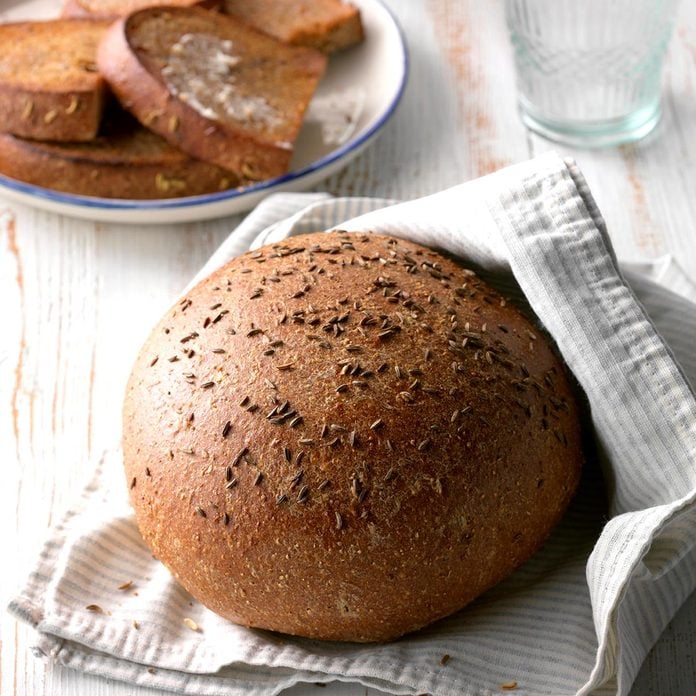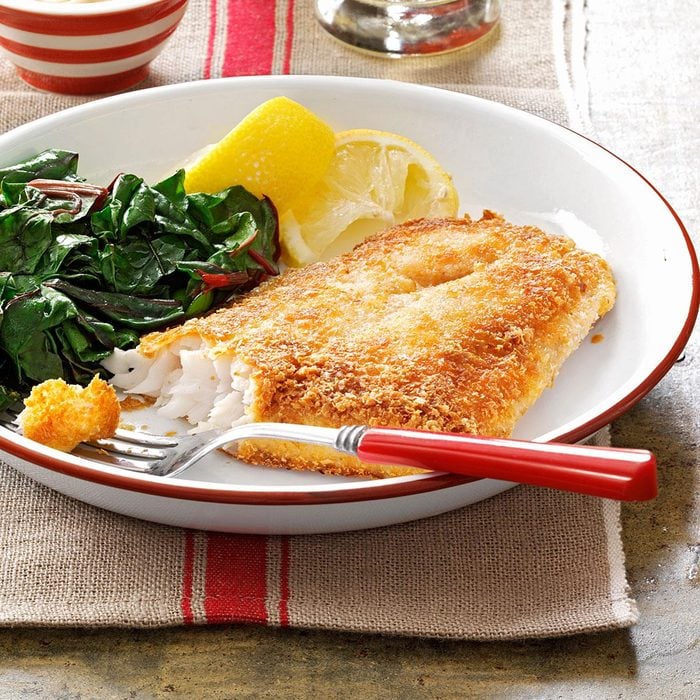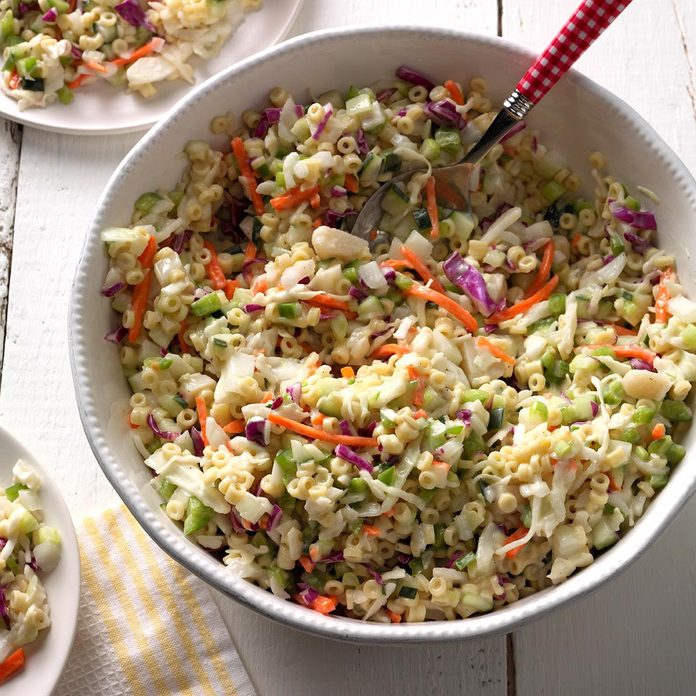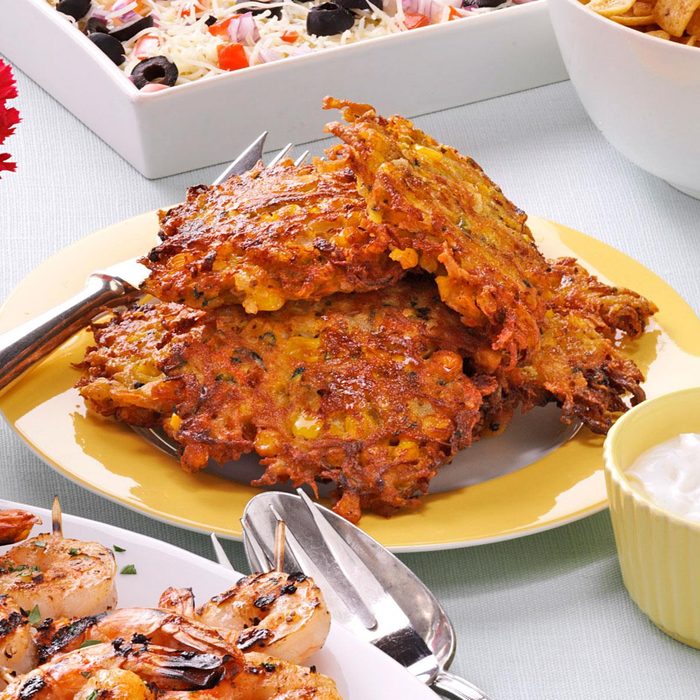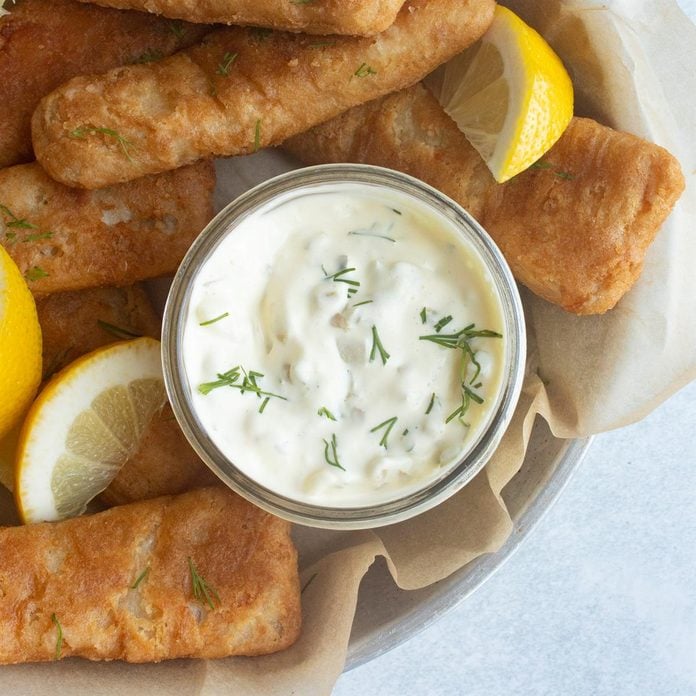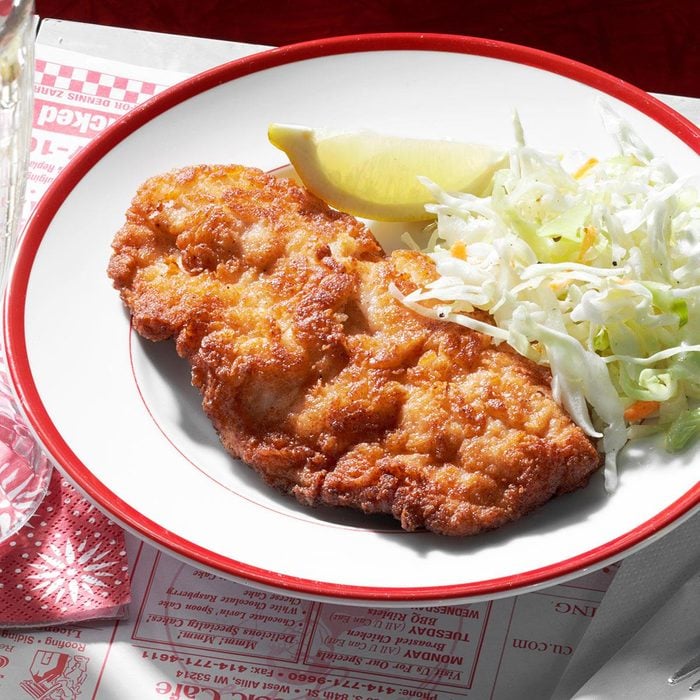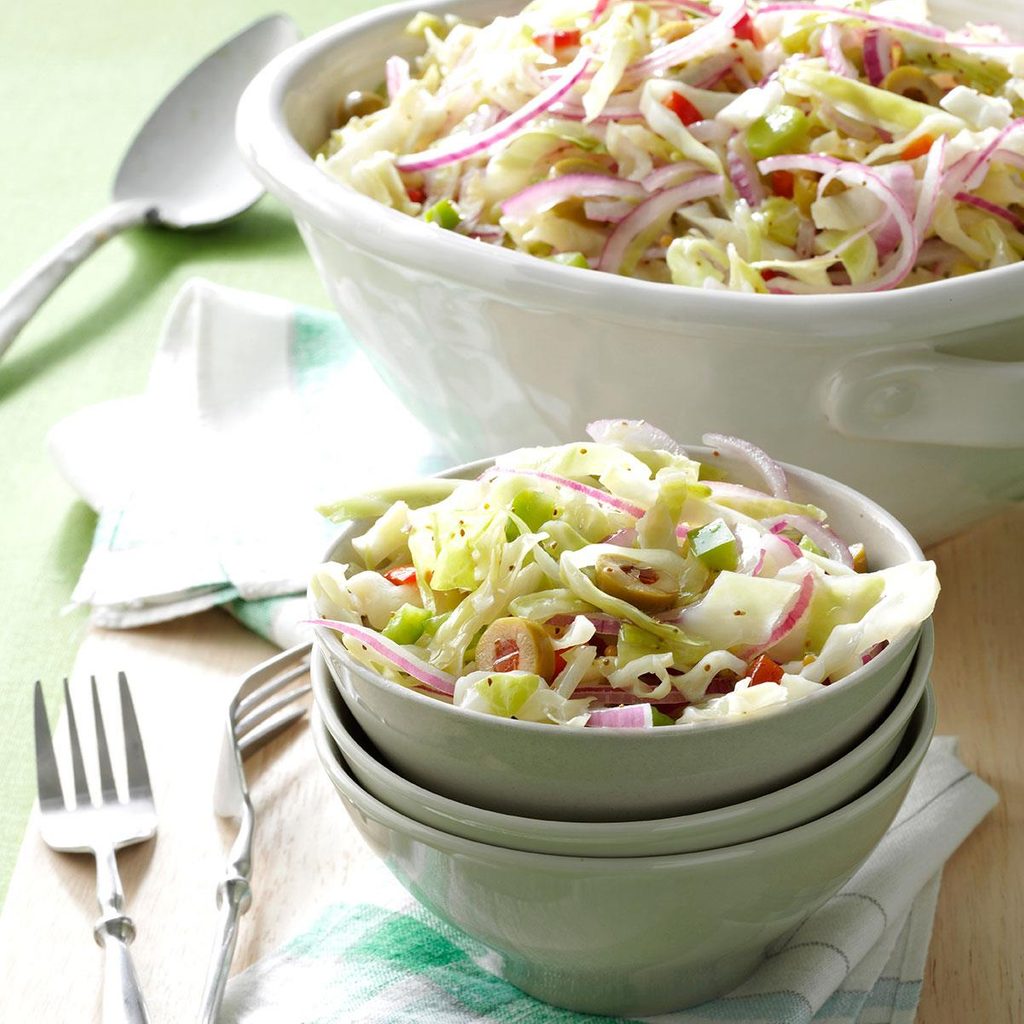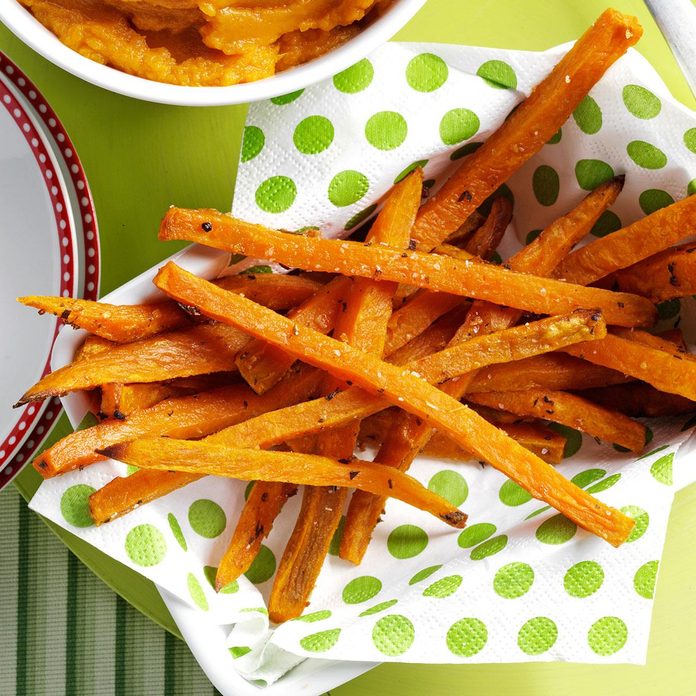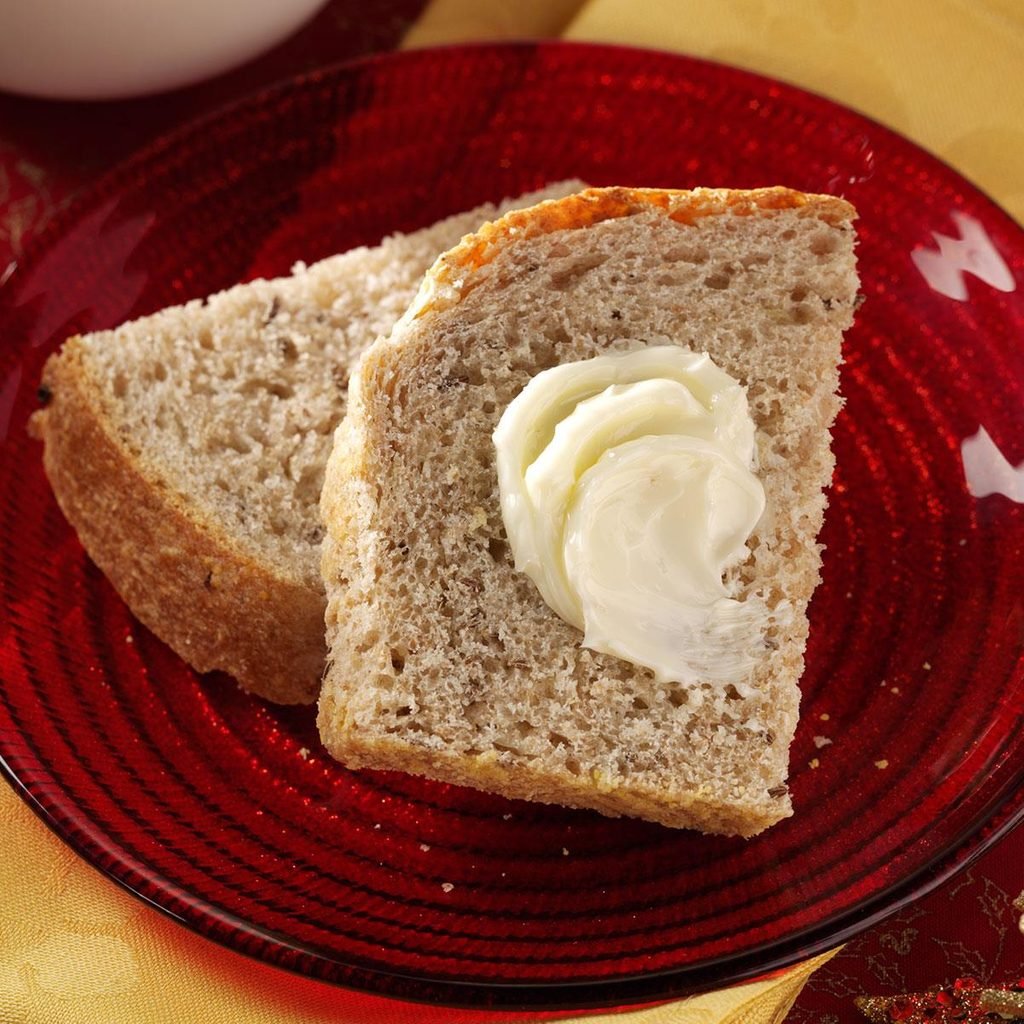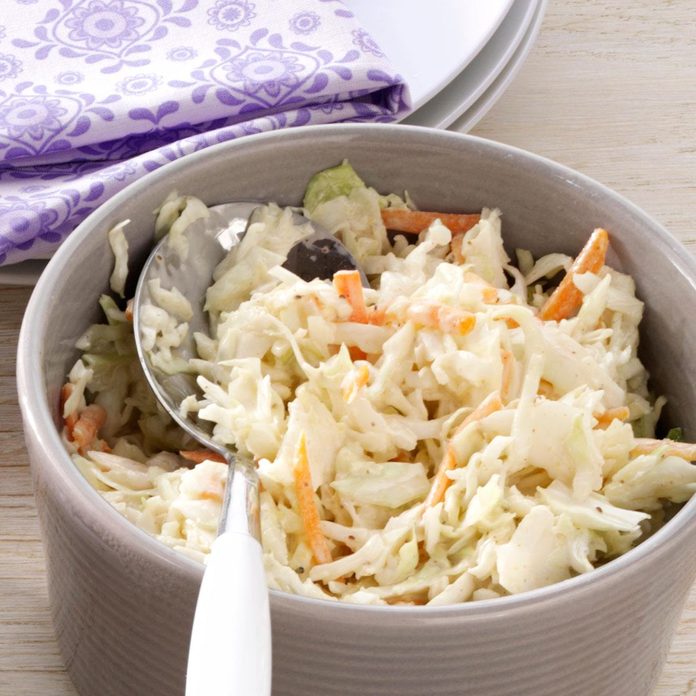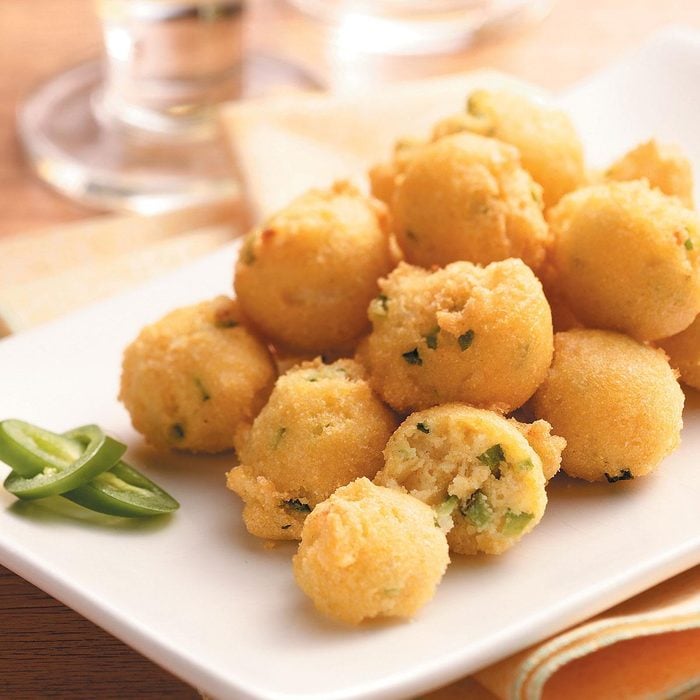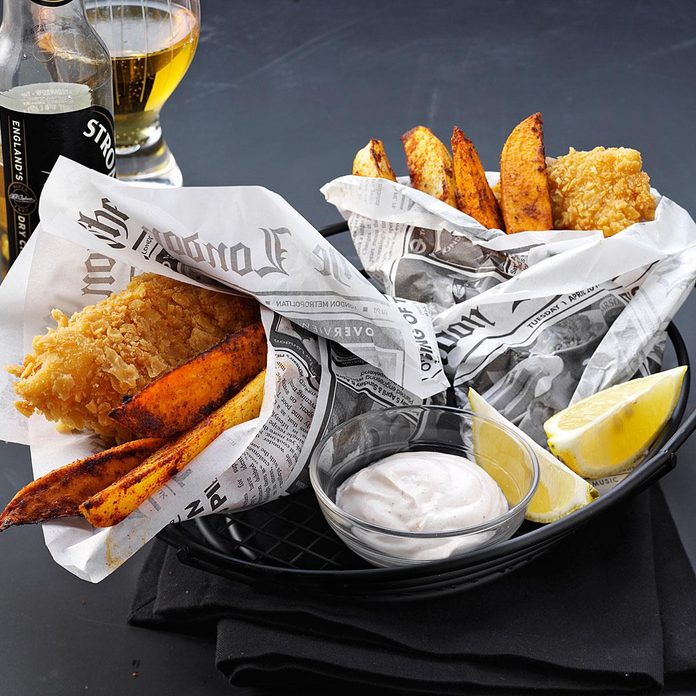While it’s always fun to head to your local hot spot for a fish fry, why not batter up and make it yourself? Before you dive in to the seafood section, let’s review what kinds of fish are best for frying (and which you can prepare in other tasty ways).
 Taste of Home, Getty Images (3)
Taste of Home, Getty Images (3)
The Best Fish to Fry
Alaskan Cod
In American restaurants, Alaskan cod is often used for fish and chips because it takes perfectly to the breading and high frying temps. (See for yourself by trying out this delicious fish and fries recipe, starring cod.)
Cod can be quite large, so when purchasing it, do the fish freshness test, but also consider the size of the fillets. For the best frying, you’ll want to buy cuts that are less than 1.5 inches thick and will fit in your skillet or fryer without touching the sides or overlapping.
Tilapia or Catfish
If cod isn’t your style, try farm-raised tilapia or catfish. Both of these ready-to-fry fish are available at most markets and are very affordable. Try our favorite fried catfish recipe.
Tilapia is a mild-tasting versatile fish which allows you to play with various seasonings, toppings and batters. Try out this easy air-fryer tilapia for a good introduction. On the other hand, catfish has a stronger taste that’s mellowed by a cornmeal breading, like this pan-fried catfish recipe.
Both of these fish come in boneless, ready-to-fry fillets that will fit perfectly in most pans.
Local Panfish
Don’t forget about exploring local fish options. Depending on where you live, you’ll find panfish like walleye, perch, whitefish, bluegill and/or crappie in your grocery store—all great for frying.
When purchasing, check to be sure that the fillets are boneless; frying is a quick process and doesn’t allow enough time for bones to be broken down.
Avoid Frying These Fish
If you’re angling to fry fish, we recommend avoiding varieties with a steak-like texture, including these:
Because of the density and thickness of these types of fish, when breaded and deep-fried they tend not to cook in the center. Plus, the high heat can cause them to dry out.
ⓘ
Pan Frying vs. Deep Frying
Pan frying and deep frying can produce equally delicious results, but you may find that using a deep fryer is easier if your fish is in small pieces. You can use a spider to scoop up the fish when it’s done!
If your deep fryer doesn’t have temperature control or if you are frying in a skillet, use a kitchen thermometer to ensure your temperature remains at 375ºF. (Scared to try frying? Here’s some tips on how to deep fry with confidence.)
If you’re opting to pan fry, I find that using cast-iron is the best choice. It is difficult to keep other materials hot enough without the risk of discoloring the metal or warping. Plus, if you properly care for cast iron, it’ll last a lifetime!
Enjoy your home-crafted fish fry, and don’t forget the traditional and delicious sides.
Try These Classic Fish Fry Recipes
Fish and Fries"Tuck in" as if you're in a traditional British pub. These oven-baked, moist fish fillets have a fuss-free coating that's healthy but just as crunchy and golden as the deep-fried kind. Simply seasoned and also baked, the crispy fries are perfect on the side. —Janice Mitchell, Aurora, Colorado
Creamy ColeslawFor me, this is the best coleslaw recipe because a package of shredded cabbage and carrots really cuts down on prep time. This coleslaw recipe is great for potlucks or to serve to your family on a busy weeknight. —Renee Endress, Galva, Illinois
Oven FriesI jazz up these baked french fries with paprika and garlic powder. Something about the combination of spices packs a punch. The leftovers are even good cold! —Heather Byers, Pittsburgh, Pennsylvania
Green Onion Tartar SauceHere’s a traditional sauce worth making from scratch. It makes the meal feel very special, and guests are always impressed. You might never buy the bottled stuff ever again.
—Roger Slivon, Genesee Depot, Wisconsin
Rustic Rye BreadThis gorgeous rye bread has just a touch of sweetness and the perfect amount of caraway seeds. With a crusty top and firm texture, it holds up well to sandwiches, but a pat of butter will do the job, too. —Holly Wade, Harrisonburg, Virginia
Crunchy-Coated WalleyePotato flakes make a golden coating for these fish fillets, which are a breeze to fry on the stovetop. —Sondra Ostheimer, Boscobel, Wisconsin
Macaroni ColeslawMy friend Peggy brought this coleslaw to one of our picnics, and everyone liked it so much, we all had to have the recipe. —Sandra Matteson, Westhope, North Dakota
Garden Potato PancakesMy family eats these all the time, and the pancakes don't even taste like they're full of fresh veggies. We especially like the cheese mixed in. —Peggy Roos, Minneapolis, Minnesota
Classic Tartar SauceYou'll never buy the jarred stuff again once you've tried this homemade tartar sauce recipe! —Michelle Stromko, Darlington, Maryland
Secret Ingredient Fried CatfishPancake mix and carbonated water are the surprising secrets to these beautifully browned catfish fillets. Serve with coleslaw or sweet potato fries, and get ready for smiles. —Taste of Home Test Kitchen
Spectacular Overnight SlawTo come up with this dish, I used a number of different recipes, plus some ideas of my own. It's great for a potluck because it's made the night before and the flavor keeps getting better. Whenever I serve it, I'm inundated with recipe requests. —Ruth Lovett, Bay City, Texas
Rosemary Sweet Potato FriesA local restaurant got me hooked on sweet potato fries. I started making them at home with different seasonings to match the taste. I'm thrilled with the results! —Jackie Gregston, Hallsville, Texas
Rye Onion BreadThough this earthy, whole-grain bread takes time to prepare, your patience—and palate—will be rewarded! On a cold winter’s day, a warm loaf is a wonderful accompaniment to a hearty stew. —Carol Fegley, Lavelle, Pennsylvania
Honey Mustard ColeslawI tinkered around with a family cole slaw recipe until I arrived at this sweet & tangy combination. The packaged shredded cabbage is a real time-saver, and the honey helps the dressing come together faster. An added bonus is there no mess to clean up!
Peppery Hush PuppiesFor our family, a good fish dinner just isn't complete without these zesty hush puppies. You can also serve them alone as a satisfying snack. —Carolyn Griffin, Macon, Georgia
Crispy Beer-Battered FishA local restaurant made a similar breading for shrimp po' boys, but we think this version's better. I serve the beer battered fish with a ranch dressing and hot sauce mixture as a dip. —Jenny Wenzel, Gulfport, Mississippi
